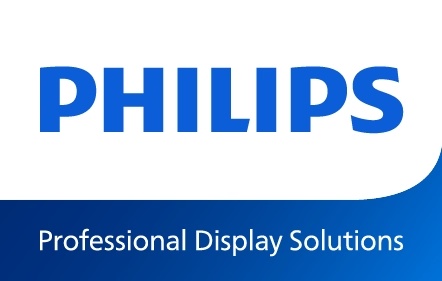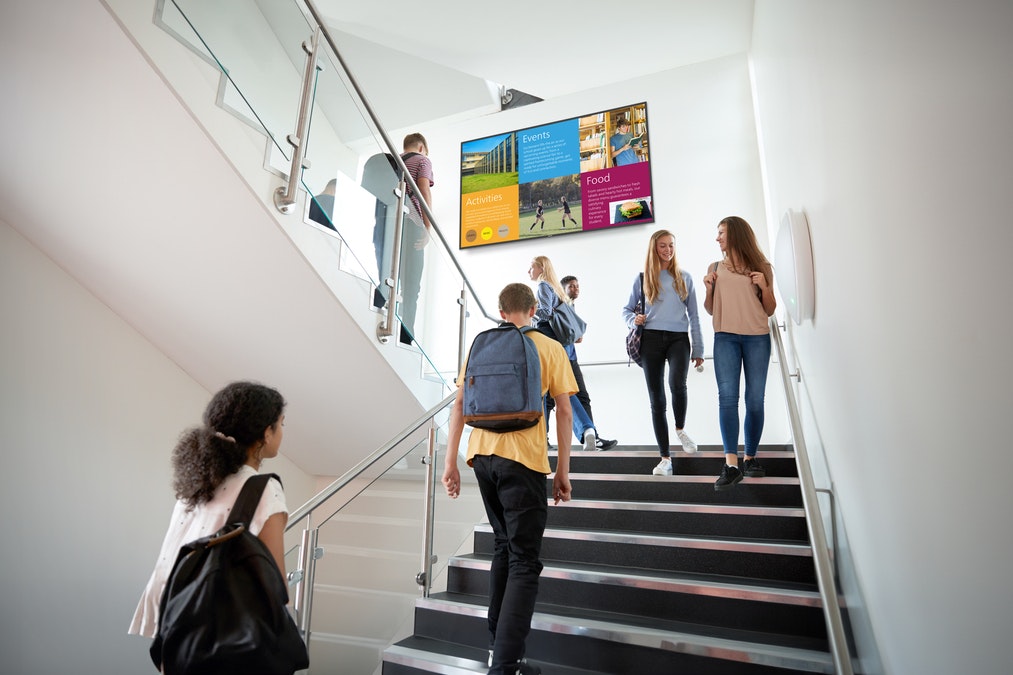Investing in new displays? Save your energy…
From classrooms to canteens – identifying and adopting energy efficient, remotely managed interactive classroom displays and campus-wide digital signage can help ease financial pressures, enhancing efficiencies for smarter, more sustainable teaching and learning.
Today, perhaps more than ever, every penny counts, and every investment is scrutinised. With the growing role of technology in education – both for driving more engaging learning experiences in and out of the classroom, as well as preparing students for the digital workplace – the stakes could not be higher. A poor buying decision could have detrimental impacts on performance for both tutors and students alike.
As an education AV/IT manager or decisionmaker, you already know of the considerations required when selecting and buying digital displays, depending on where they will be used, how, and by whom.
Is the screen big enough to be seen clearly at the back of a learning space? Is the pixel pitch sufficient for viewing content close-up? Is the user experience intuitive enough that teachers and their students feel confident with the technology at hand?
All remain fundamental decisions in creating the desired teaching, learning, and communications experience, whether for a handful or hundreds of displays across a single campus or multiple sites. But with rising energy costs, as well as a real impetus to move sustainability up the agenda, the market and considerations have changed.

Energy costs
With a growing focus on sustainability, coupled with the escalating pressures of rising utility costs, the energy efficiency of displays and the running costs associated with them are becoming increasingly critical factors.
Even with various recent government interventions and price caps, short-term outlook and future unpredictability are far from reassuring. Managing costs and a clear ROI have never been more in-focus.
The need for digital displays, whether a creative and eye-catching videowall in reception, or digital signage and interactive displays in classrooms, canteens, corridors and sports halls/stadiums, have not changed. Going backwards is not an option. To reduce the financial burden, though, we now need to take a more strategic approach, taking several factors into account...
Product efficiency
The first is to gain a better understanding around the energy efficiency of the product itself. This is not a walk in the park, as even with energy labels and certifications, the information provided for similar products can vary wildly from manufacturer to manufacturer.
Latest European regulations ensure greater clarity around energy efficiency of electronic displays, supporting more educated buying decisions. And the updated rating structure introduced in 2023 gives manufacturers greater scope for energy efficiency enhancements and the vision to break boundaries, differentiating with more power-conscious products. Need a great example? Take a look at the Philips Signage 3000 Series EcoDesign, which uses up to 70% less power than its direct competitors, without compromising on quality. It is no wonder it is the first display of its kind to gain an E rated EU energy label, and a Silver Climate+ EPEAT rating.
The difference in running costs between G- and E-rated appliances can be substantial, with no impact on desired outcomes. Reducing the use of older, less efficient equipment is worth considering for the long-term. It is currently estimated that up to 25% of products in the market do not comply with the previous energy efficiency labelling regulations, with around 10% of potential energy savings lost due to non-compliance.
Take control
It may seem obvious, but if nobody is looking at a display, it should be powered down or switched off. Easier said than done in a busy education environment. Or is it? Philips Professional Displays can be managed remotely, including content, troubleshooting, and (important for energy management) brightness and power, via the PPDS Wave platform. This can also extend display lifetimes, resulting in lower maintenance costs and less frequent need to invest in replacements. The savings soon add up.
Less is more
Finally, it is important to choose the right technology. Does the environment really warrant or benefit from 4K? Is LED or LCD the way forward?
Direct view LED displays, when comparing like-for-like sizes, can consume less energy than their LCD counterparts. So, replacing old LCDs with dvLED displays could be an immediate cost saver. Philips dvLED displays are designed to deliver proven low energy consumption – between 20%, and in some instances, as much as 50% less, when compared to similar products on the market, without compromising on performance.
What is more, the Philips Unite LED 5000 Series All In One display comes with a unique and game changing standby mode, which uses only 50W of power, rather than the 200W industry standard.
Display purpose
It is important to base buying decisions on the business case – on what exactly the display is needed for. Again, it seems obvious, but we have seen numerous incidents where customers have invested in displays that deliver (and are priced to include) far greater capabilities than will ever be required.
Philips Tableaux, the world’s first Advanced Colour (60,000, including blue) ePaper introduced by a global display manufacturer, provide vivid 24/7 static content while running on zero power. Yes, zero power. Also running on an Android SoC, these nifty displays can be managed remotely via PPDS Wave, too. Saving time and fuel costs.
For environments where digital signage is desired, either replacing wasteful paper communications or where content on existing digital signage does not need to be dynamic (movies), Philips Tableaux is a game-changing alternative.
What is more, requiring no physical power source, displays can be easily located and relocated for use in almost any indoor location – from the classroom for information, through the corridors for wayfinding to the canteen for menu boards. Food for thought!


